Rock gardens are making a comeback. No longer relegated to the rustic and country-themed home, rock gardens can now be found in all kinds of modern homes and landscapes. There are many reasons for this resurgence: ease of care, low maintenance, drought tolerance, and the ability to create an instant “zen” garden or landscape focal point. This article will answer some common questions about creating a modern rock garden and offer tips on how to get started.
What is a Modern Rock Garden?
A modern rock garden is a type of landscaping that incorporates the use of rocks and stones as part of its overall design. It is characterized by modern aesthetics, such as abstract shapes and bold colors, in contrast with traditional rock gardens, which often feature more natural shapes. Modern rock gardens can be designed to fit any space, from a small balcony to a large backyard. They can also feature various types of plants and other elements, such as water features or sculptures. With careful planning and execution, a modern rock garden can bring life to an otherwise dull landscape while providing an area for relaxation and contemplation.
Modern rock gardens are typically low maintenance since they require little watering or fertilizing compared to other types of landscaping projects. Additionally, rocks and stones are naturally resistant to pests, which makes them ideal for outdoor spaces. Additionally, rocks absorb heat during the day and slowly release it back into the environment at night, providing a cool spot in hot weather. Modern rock gardens can also provide an area of interest when viewed from inside the home since they often feature different colors and textures that catch the eye.
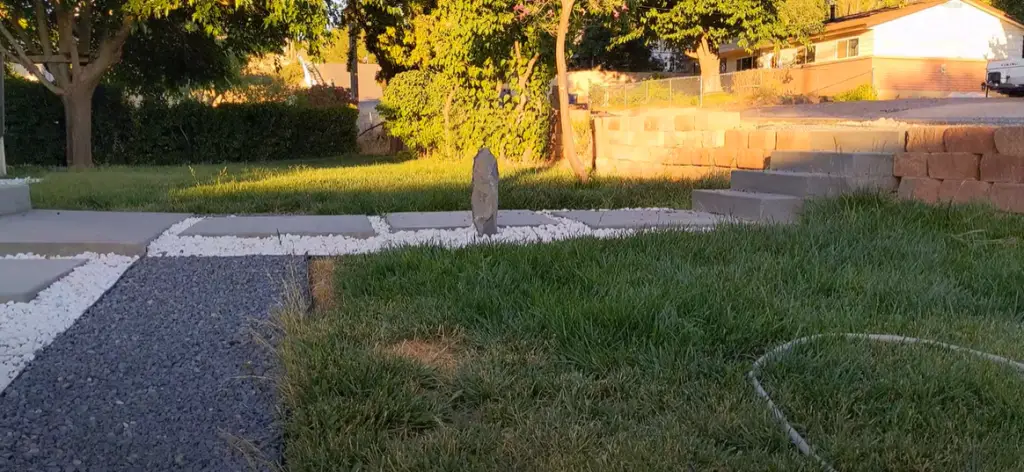
The best way to create a modern rock garden is to start with larger landscape features such as walls or pathways and then add smaller elements like rocks or sculptures. When adding plants, opt for native varieties that require minimal care but still have interesting shapes and foliage. Finally, consider adding some lighting features to highlight certain areas of your landscape at nightfall. With careful planning and attention to detail, you can create a modern rock garden that is sure to wow your guests.
Modern rock garden ideas
Use gravel to blur the boundaries
Gravel is one of the most versatile materials for creating a rock garden. Its subtle colors and textures blend in with virtually any environment, blurring the boundaries between hardscape and softscape to create an aesthetically pleasing effect. Additionally, gravel can be used to line pathways or fill in empty spaces to give your garden a more finished look.
Create tiers of rocks
Creating multiple levels of rocks in your garden can help add interest and dimension. You may choose to use large boulders as the foundation or smaller stones as stepping stones that lead up a hill. Either way, adding tiers will make your rock garden look like it was sculpted by nature itself!
Create terracing with metal edging
Metal edging is a great way to create terracing in your rock garden. It serves as a barrier between different levels of rocks, making them more defined and enhancing the overall look. Plus, metal edging can be painted any color you desire to match the aesthetic of your backyard.
Incorporate plants and flowers into your design
The beauty of having a rock garden is that you can easily incorporate plants and flowers into it without taking away from its natural charm. Whether you choose colorful perennials or lush succulents, adding vegetation will make your landscape come alive! Just make sure to use drought-tolerant varieties so they don’t require excessive watering.
Use lighting for a magical effect
Adding lights to your rock garden can transform it into a magical wonderland. You may choose to line the paths with solar-powered lights or use spotlights to highlight certain features. Whatever you decide, lighting will create an ambiance that’s sure to impress!
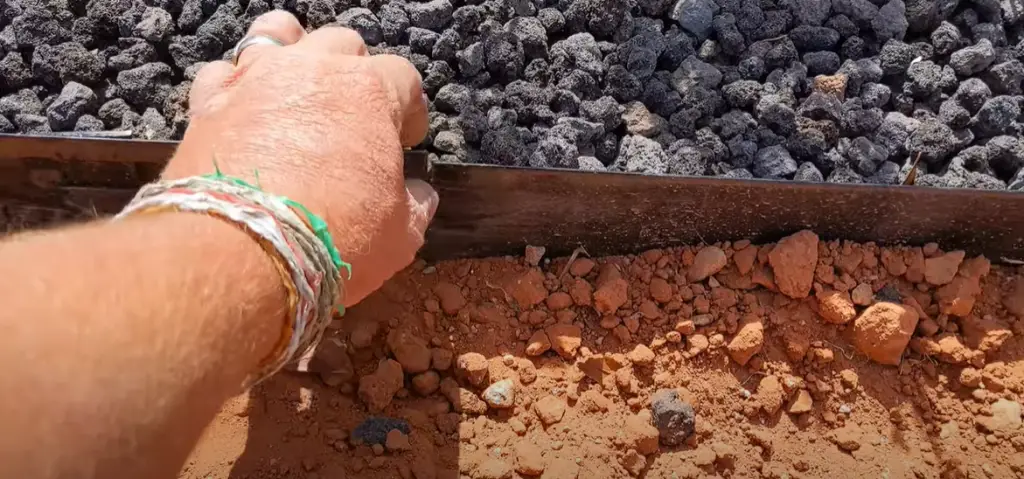
Mix and match rocks of different shapes and sizes
One of the best ways to make your rock garden look unique is by mixing and matching rocks of different shapes and sizes. This will add texture and interest to your landscape, making it stand out from traditional gardens. Plus, it’s fun to experiment with different combinations until you find one that looks perfect!
Cut shapes into a plain patio area
If you have a plain patio or outdoor space, consider cutting shapes into it and filling them with gravel and rocks. This will give your garden an instant makeover and add character to the area. Plus, it’s relatively easy to do so you can get creative with your design!
Add water features for a calming effect
Adding water features such as fountains, ponds, or bubbling rocks is an ideal way to create a calming atmosphere in your rock garden. The sound of trickling water can be incredibly soothing and fill the atmosphere with serenity. Additionally, aquatic plants will bring a whole new level of beauty to your landscape.
Include stone benches or sculptures
Stone benches or sculptures are a great way to add an extra touch of charm to your rock garden. They can be used as seating areas or simply as decorative pieces that draw the eye. Plus, they’ll provide you with a comfortable spot to sit and enjoy the beauty of your garden.
Use natural stones for a rustic look
If you love the look of natural stone, consider incorporating it into your rock garden design. Natural stones have been used for centuries in gardens because of their timeless beauty and durability. Plus, they’re available in many shapes and sizes so you’re sure to find one that fits your design style!
Incorporate lush foliage
Adding lush foliage is another great way to take your rock garden to the next level. You can use plants such as ferns or ivy to give your landscape a lush and inviting look. Plus, they’ll provide plenty of shade during the summer months!
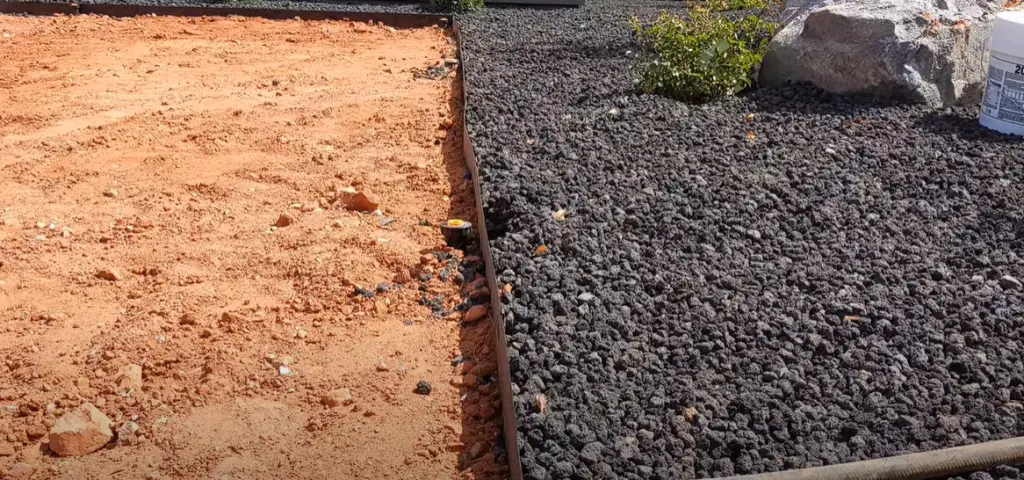
Add to existing stone steps and walls
If you already have stone steps or walls, consider adding to them and creating a rock garden that cascades down the side. This will create an interesting visual effect and make your landscape even more eye-catching. Plus, it’s relatively easy to do so you can get creative with your design!
Personalize your rock garden
Your rock garden should be a reflection of you and your style so don’t be afraid to add a few personal touches. Whether it’s incorporating special rocks that you collected on a trip or placing mementos in strategic locations, these small additions will make your rock garden truly yours.
Choose the appropriate planting
Be sure to choose appropriate plants for your rock garden. Consider the climate and soil of the area before deciding on what to plant. It’s important to select drought-tolerant varieties that can withstand intense heat and dry conditions. For example, succulents and cacti are great options for this type of environment.
Make a mini landscape in a stone container
If you don’t have the space for an outdoor rock garden, consider creating a mini version inside a stone container. This is a great way to bring nature into your home and make your living space more inviting. You can fill the container with rocks, plants, and even water features such as fountains or ponds.
Remodel an existing raised bed
If you already have a raised bed in your garden, consider remodeling it and turning it into a rock garden. You can add rocks, gravel, sand, and plants to the bed to create an interesting space that looks great from all angles. Plus, this is an easy project that won’t take long to complete! Begin by removing the existing soil and replacing it with rocks and gravel. Then, add your plants and other features as desired.
Create stepping stones
Stepping stones are a great way to bring more attention to certain areas of your rock garden. Place them in strategic locations throughout the space to give visitors a path they can follow while exploring your landscape. Plus, this will make it easier for you to access different parts of your garden without having to step on precious vegetation!
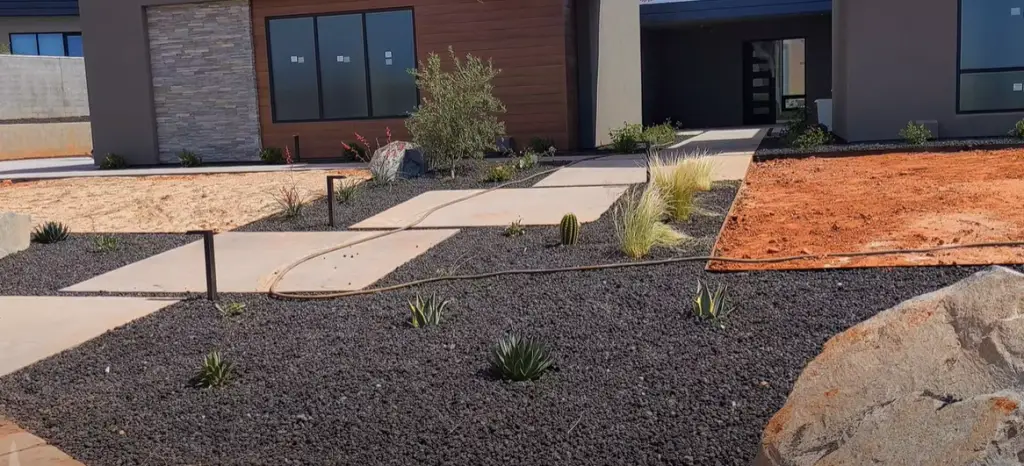
Take inspiration from Japanese gardens
Japanese gardens are renowned for their beauty and tranquility. If you’re looking to create a peaceful escape in your landscape, consider taking inspiration from Japanese gardens when designing your rock garden. Incorporate natural stones, water features, lush foliage, and other elements that will bring the space to life!
Color match with your home
If you want to tie the rock garden into your home, consider color matching with your exterior. This will create a cohesive look and make it feel like the garden is an extension of your house. You can do this by using stones or plants that are similar in color to your siding or roof!
Place decorative objects throughout
Don’t be afraid to get creative when designing your rock garden. Place decorative objects such as stones, statues, and lanterns throughout the space for added interest and charm. For example, placing a stone Buddha statue in the center of the garden will draw attention and give your landscape a unique look. These small details will bring character to the area and make it even more inviting [1]!
Tips on Installing Landscaping Rocks
Installing landscaping rocks can be a great way to add visual interest and texture to your outdoor space. However, it’s important to do it the right way to get the desired look and results. Here are some tips on how to install landscape rocks:
- Choose the Right Rocks – When choosing landscape rocks, make sure they are appropriate for the type of terrain you have and that they will match the existing design of your yard.
- Prepare Your Landscape – Before adding rock, you need to create a plan and prepare the ground where you will lay them out. Remove any organic material such as grass or weeds from the soil, level it out if necessary, and mix fertilizer into the soil.
- Begin to Place Rocks – Once your landscape is ready, start by placing larger rocks in strategic places and fill in with smaller ones around them. Make sure to pay attention to the size of rocks you use and how they look when placed next to each other.
- Add a Weed Barrier – To keep weeds from growing between your landscaping rocks, add a weed barrier underneath them before adding soil or additional gravel. This will help keep your landscape looking neat and help prevent future maintenance costs.
- Finish With Soil & Gravel – After you’ve laid down your rock, it’s time to finish off the work with some soil and gravel or mulch. This will give the area a more finished look and help keep the rocks in place.
- Choose Plants to Complement Rocks – Finally, consider adding some plants that will help tie the landscaping rocks into your overall landscape design. Some good choices include ground cover, grasses, succulents, or shrubs.
Following these tips can ensure that you get the best results out of your landscaping rock installation project! With a little planning and preparation, you can create an outdoor space that is beautiful and functional for years to come [2].
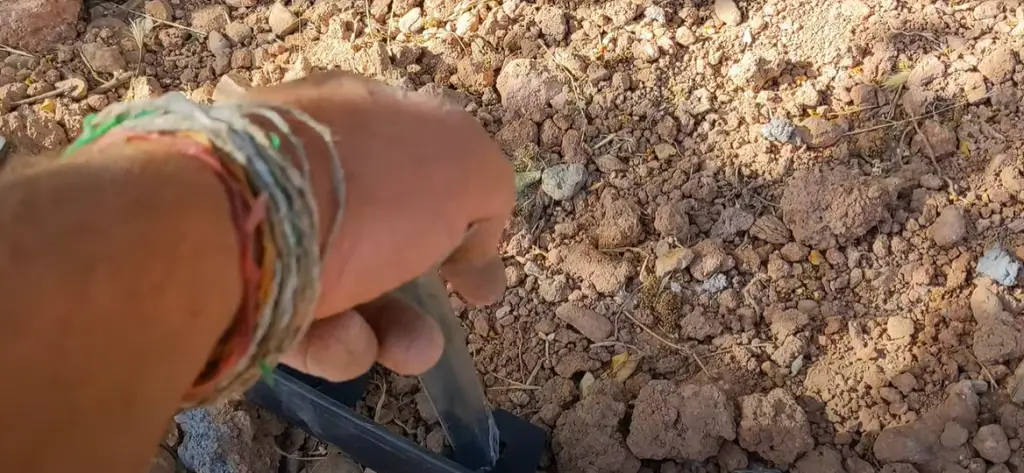
What are the best materials for modern rockery?
Modern rock garden design can be achieved using a variety of materials, such as gravel and rocks, concrete blocks or bricks, indigenous stones, boulders and pebbles. The type of material used in the rockery should be considered based on its suitability to the location’s climate and soil conditions. For instance, if you live in an area with high humidity levels, then it is best to choose natural stone over concrete blocks. Additionally, consider how the chosen material will hold against extreme weathering and other external factors that may affect its long-term durability before making your decision.
When selecting rocks for rock garden design, there are many options available including flagstone, limestone, sandstone, and slate. Flagstone provides a flat surface perfect for pathways and other ground cover. Limestone is a great choice for its texture and durability, while sandstone offers the perfect balance of beauty and strength. Slate is an excellent option for rock gardens due to its unique look, but it’s important to consider if it is appropriate for the area as slate can be easily damaged in high-humidity environments or exposed to freezing temperatures.
Finally, boulders can provide both stability and visual appeal when included in rock garden design. Boulders can help define spaces within the garden while providing support for climbing plants. Choose boulders that are suited to your climate – those native to your area will require less maintenance than imported stone – and bear in mind how they will fit into the overall design of the garden.
How to maintain a modern rock garden?
Maintaining a modern rock garden is fairly simple. Here are some tips on how to keep your modern rock garden looking beautiful:
- Add mulch or gravel to the area around the rocks to provide extra texture and contrast. If you have large rocks, consider covering them with smaller stones or pebbles for an interesting visual effect.
- Keep weeds away by regularly pulling out any that appear in your garden’s soil. Weeding can help reduce the spread of invasive species, which can take over your space if left unchecked.
- Prune plants surrounding your rock features as needed for shape and size control, but don’t be too aggressive – the goal is to create balance between the rocks and plants.
- Water your rock garden regularly, but be sure not to drown it. The type of watering will depend on the types of foliage you have in your rock garden, as some require more water than others.
- Once a year, add fertilizer or compost to promote growth and keep your plants healthy. This can also help reduce the need for frequent pruning of your plants.
- If necessary, reposition large rocks or other features that may shift over time due to weather or soil conditions. It’s best to do this before new plantings are added so they don’t get too close to any large objects in the rock garden.
- Finally, enjoy it! A modern rock garden is a great way to add an interesting and unique look to your outdoor space. Take the time to sit back and admire all of the hard work you’ve put into making it beautiful.
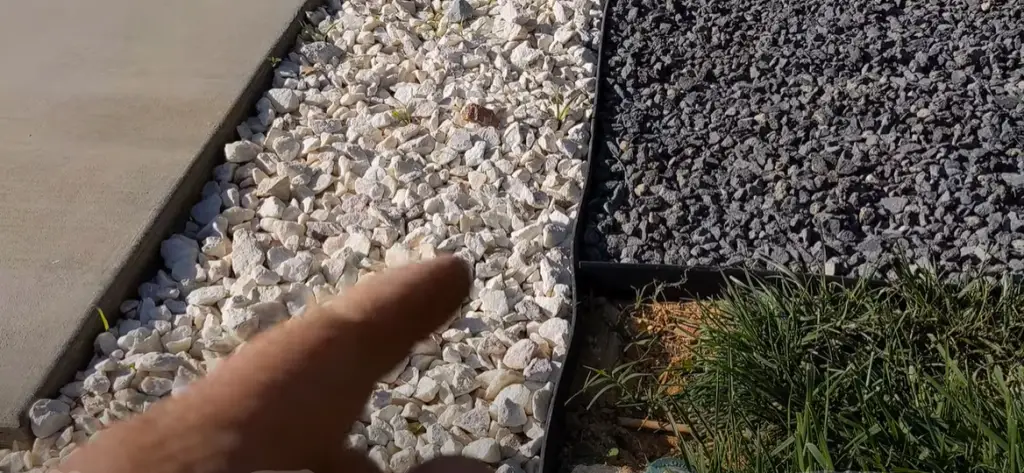
What plants to use in a modern rock garden?
Modern rock gardens have become increasingly popular in recent years and can be a great way to add some character to your garden. When deciding on plants for your modern rock garden, there are a few key things to consider: color, texture, height, and water requirements.
For some pops of bright colors, small succulents make an excellent choice as they require minimal care and can provide visual interest with their various shapes and sizes. For example, Aloe vera is a great choice for adding texture to the environment with its pointy leaves while providing beautiful yellow blooms during the springtime months.
For more lush green options, consider adding evergreen shrubs such as Boxwood or Juniper to your rock garden. These plants are relatively low-maintenance, and drought-tolerant, and create a nice backdrop for other plants to stand out against.
Creating a modern rock garden allows you to mix and match different types of plants and colors depending on your preferences. With careful planning and consideration of plant needs, any rock garden can turn into a beautiful oasis in just a few short weeks!
FAQ
What to put in rock garden ideas?
When creating a rock garden, it’s important to consider the type of plants and rocks you want to use. Some popular ideas for rock gardens include:
- Using stones or boulders as accents in the garden and grouping them around trees or other focal points.
- Combining different types of stones with perennials, grasses, shrubs, and other low-maintenance plants.
- Incorporating water features such as bubbling fountains or mini ponds.
- Adding traditional Japanese elements like wooden bridges, lanterns, stepping stones, and stone basins.
- Creating raised beds for a more formal look or terraced beds for a more natural feel.
- Selecting drought-tolerant plants, such as succulents, cacti, and groundcovers.
- Filling any gaps between stones with small evergreen shrubs or conifers for texture and interest year-round.
- Creating pathways through the garden with gravel or stepping stones.
- Including flowering plants for seasonal color.
No matter what type of rock garden you create, it should be unique to your own style and taste! Have fun experimenting with different elements until you find something that works for your landscape.

How do you beautify a rock garden?
There are many ways to add beauty and interest to your rock garden. First, choose attractive and colorful rocks or boulders to form the foundation of the garden. Then, add some low-maintenance plants such as succulents, cacti, dwarf shrubs, and groundcovers. Finally, consider incorporating other elements like water features (fountains or mini ponds), pathways with gravel or stepping stones, wooden bridges, lanterns, and stone basins for a more traditional Japanese rock garden look.
The key to a beautiful rock garden is balance. Try not to overcrowd your garden with too many plants or features – let each element have its own space to shine! Also, remember to keep in mind the climate you live in when selecting plants so that they are suitable for your area’s environment.
What kind of plants are best for a rock garden?
When selecting plants for your rock garden, it’s important to take into account your climate and the amount of sunlight the area receives. Some good options for sun-loving gardens include lavender, thyme, heather, rosemary, sage, sedum, yarrow, and creeping phlox. For shadier spots that don’t get much direct sunlight, opt for ferns, hostas, heuchera, astilbe, Lamium, or snow in summer.
If possible, try to select low-maintenance plants that require minimal water and don’t require too much pruning or fertilizing. That way, you can enjoy your rock garden without having to spend too much time maintaining it!
What are the benefits of having a rock garden?
A rock garden can provide many unique benefits depending on its design and purpose. One common benefit is that it helps reduce erosion by allowing rainwater to soak into the soil slowly instead of running off quickly. Additionally, since most rock gardens use low-maintenance plants, they require less water and fertilizer, which can help conserve resources.
Additionally, rock gardens provide excellent habitats for wildlife such as birds and butterflies, as well as beneficial insects like ladybugs and bees. They also add texture and interest to your garden, making it a beautiful oasis in any landscape! Finally, rock gardens are great for meditating and relaxing – just be sure to select plants that won’t irritate allergies! All in all, rock gardens offer many benefits that make them worth considering when designing your landscape.
How do you arrange rocks in a rock garden?
When arranging rocks in a rock garden, it’s important to keep the overall size and shape of the area in mind. For example, if you have a large area with plenty of room for several layers of rocks, you can use larger boulders as well as smaller stones to create different levels. If space is limited, try using only one type of stone or boulder for a more unified look.
In terms of placement, start by laying down your largest rocks first, then fill in any gaps with medium-sized stones. Finally, add some small pebbles or gravel to help give texture and depth to your rock garden. You can also add other elements like mulch or sand to further enhance the look.
Remember, there’s no right or wrong way to arrange the rocks in your rock garden – it’s all about personal preference and experimentation.
How do you use decorative rocks in a garden?
Decorative rocks can be used in a variety of ways to add interest and texture to your garden. They can be used as pathways, borders for flower beds, edging around plants, or even decorative elements like dry riverbeds or waterfalls. Additionally, rocks come in a variety of sizes and shapes that make them perfect for creating custom designs – from simple patterns to complex mosaics!
When using decorative rocks in your garden, it’s important to consider the size and shape of the area you are working with as well as any existing plants or features. For example, larger stones may look best around tall trees while smaller stones may work better near shorter shrubs or other small plants. Additionally, try mixing different colors and types of rocks for more visual appeal.
What do you put under decorative rocks?
When using decorative rocks in your garden, it’s important to use a material underneath them that will provide adequate drainage and help keep the rocks in place. The most popular materials for this purpose are sand, gravel, or small stones. These materials can help keep your decorative rocks from sinking into soft soil, as well as ensure proper drainage.
For larger projects like pathways or dry riverbeds, it’s best to use a mix of large and small stones with a layer of sand or gravel on top. This combination will create ample support and allow water to drain away quickly. Additionally, you may also want to add a weed barrier beneath your stones to prevent any unwanted plants from popping up!
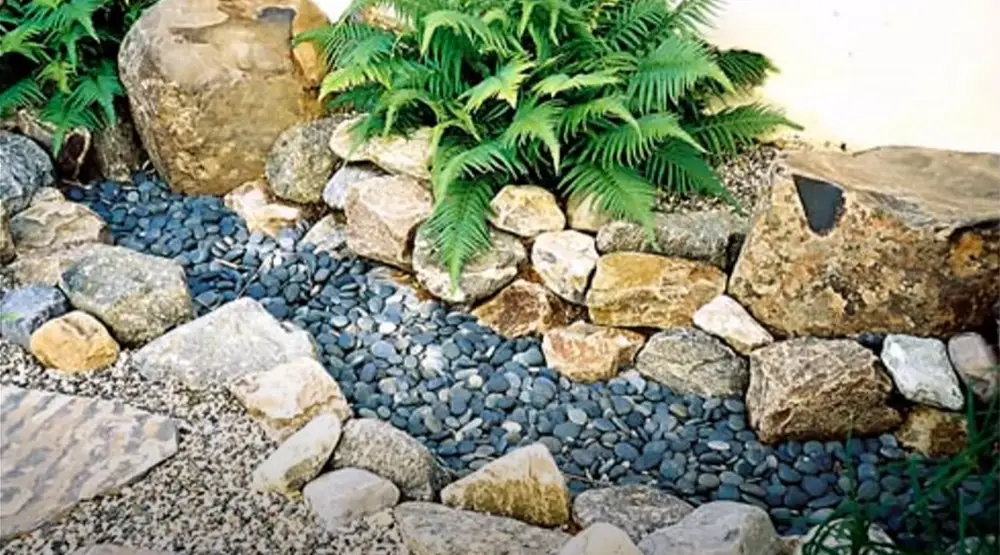
What is the special thing about rock gardens?
Rock gardens are special for many reasons. Not only are they a beautiful addition to any landscape, but they also offer a variety of practical benefits. For example, rock gardens can help conserve water and resources since they use low-maintenance plants that require less water and fertilizer. Additionally, they provide excellent habitats for wildlife such as birds and butterflies, as well as beneficial insects like ladybugs and bees. Finally, rock gardens provide an excellent place to relax and meditate in the garden – just be sure to select plants that won’t irritate allergies!
Why do you put sand under the rock garden?
Sand is often used beneath rock gardens to promote drainage. Since rocks can be quite dense, adding a layer of sand underneath them ensures that water will be able to easily pass through. Additionally, the sand helps keep the rocks from sinking into soft soil, as well as provides stability for any pathways or stepping stones you may have included in your design.
Finally, it has an aesthetic benefit – the light color of the sand helps contrast with the dark tones of the rocks and makes them stand out even more! It’s important to note that when using sand beneath your rock garden, you should use a natural material such as washed river sand or decomposed granite instead of the builder’s sand (which contains large pieces of gravel).
How do you place decorative rocks?
When using decorative rocks in your garden, it’s important to consider the size and shape of the area you are working with as well as any existing plants or features. Additionally, try mixing different colors and types of rocks for more visual appeal.
Start by placing some large stones first – these will be your base stones that hold everything else in place. Then, add medium-sized rocks as filler between them. Finally, use smaller stones to fill in any gaps and create a cohesive look. If you are creating a pathway or other patterned design, lay out the rocks before permanently placing them to ensure they fit properly. Remember to leave some space between each rock so that water can percolate down through the soil!
Useful Video: 28 Beautiful Rock Garden Ideas and Designs
Conclusion
Modern Rock Gardens can provide a beautiful, tranquil addition to any outdoor space. Not only are they visually appealing, but they also require minimal maintenance while providing the perfect opportunity to create a unique and personalized garden that is tailored to your style. From choosing the right kinds of rocks and plants to deciding on how you want your modern rock garden arranged, there are countless possibilities for you to explore. Whether you’re looking for a way to create a relaxing escape in your backyard or just an interesting way to spruce up a corner of your yard, building a modern rock garden is an enjoyable way to bring beauty and nature into your home.
References:
- https://www.gardeningetc.com/design/modern-rock-garden-ideas
- https://www.irwinstone.com/8-great-tips-installing-landscaping-rocks-washington-dc/





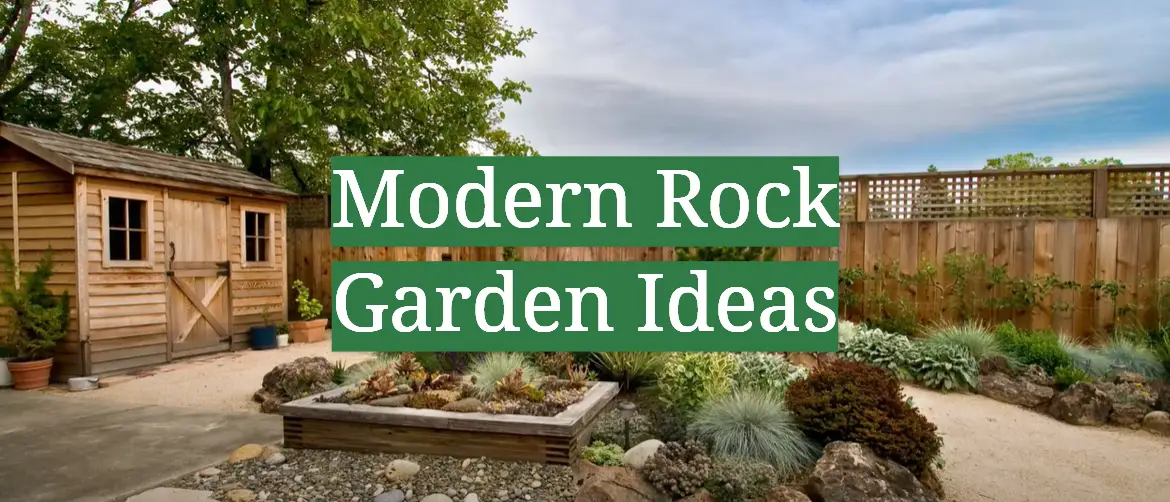




Leave a Reply
View Comments